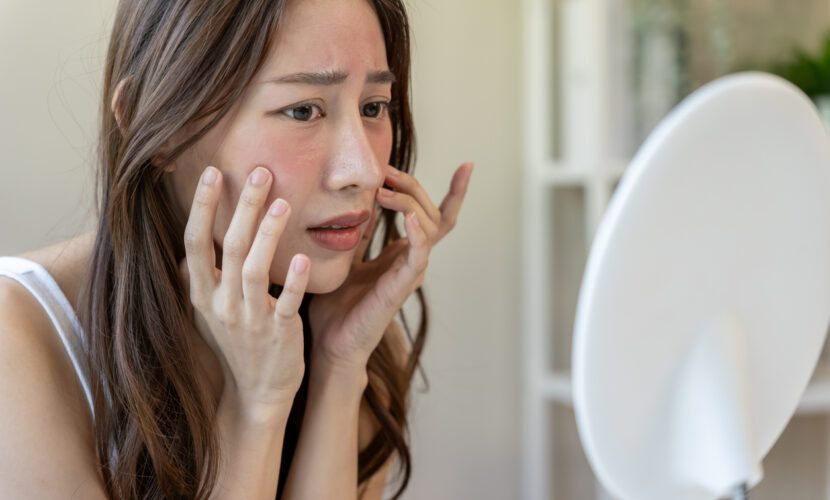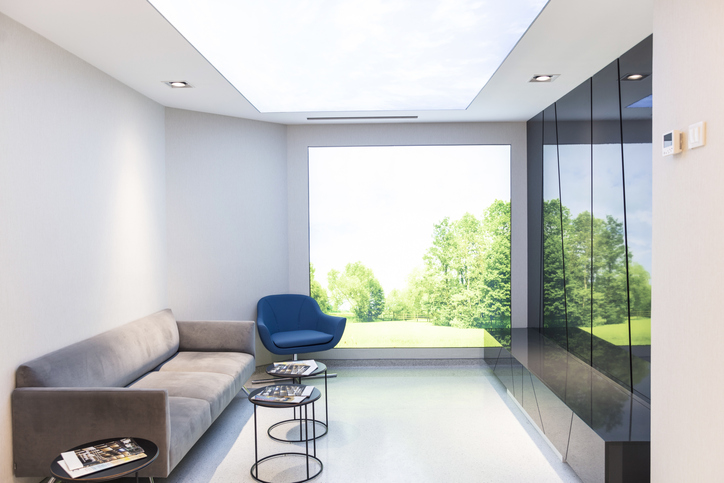Have you ever hesitated to undergo treatment after hearing such shocking rumors as, "My melasma worsened when I underwent the popular blemish treatment Lumecca. If you are brave enough to undergo cosmetic treatment, you definitely do not want to regret it.
In fact, it is a medical fact that not all spots can be cleared up by Lumeca, and in particular, if melasma is irradiated easily, there is a risk of making the spots darker. This is because melasma is not a simple blemish, but a very delicate condition that continues to cause "weak inflammation" deep within the skin.
Here, we will provide a thorough explanation from an expert's perspective, from the medical evidence of why lumeca can worsen melasma, to how to choose the right treatment to avoid regrets, and a specific checklist to identify a trustworthy doctor.

Graduated from the Faculty of Medicine, National Kumamoto University. After serving as the director of major beauty clinics in Japan, etc., he opened Aladdin Aesthetic Clinic in 2023. He is a professional in aesthetic medicine with a doctorate in anti-aging research and many years of experience. With the motto of "Toward the realization of cosmetic medicine without lies," he aims to be the "Only One" together with his patients.
- Check it out for yourself first! The characteristics and how to recognize that melasma!
- Why is there a risk of melasma worsening with Lumecca in the first place?
- Is Lumecca "absolutely contraindicated" for melasma? Important points that make the difference between acceptable and unacceptable treatment
- Don't Regret Melasma Treatment! Effective treatments other than Lumecca
- summary
Check it out for yourself first! The characteristics and how to recognize that melasma!
Many of you may be filled with such anticipation, "I want to get rid of my long-standing blemish problem with Lumecca. However, please stop and take a closer look at your own spots in the mirror. In fact, there are various types of spots, and if the spot is "melasma," the wrong choice of treatment method may not only fail to improve the spot, but may even worsen it.
In order to avoid regrets with beauty treatments, it is of utmost importance to first know your enemy, that is, to correctly understand what your spots are. Here, we will explain the typical symptoms of melasma, a blemish that requires special attention, and how to distinguish it from other blemishes, in an easy-to-understand manner from a professional's perspective. Correct knowledge will be your compass to guide you to the best treatment.
What are the typical symptoms of melasma?
Although melasma may sound like some kind of special disease, it is a type of blemish and is not uncommon. However, it has a very distinctive appearance that sets it apart from other blemishes. First, let's do a self-check to see if your spots fit the following characteristics.
(1) Symmetrical appearance on both cheeks
The most typical feature of melasma is its "symmetry. It is often seen as if a butterfly had spread its wings, or as if it were a map, spreading barely symmetrically around the high cheekbones.
It can also appear not only on the cheeks, but also on the forehead, under the nose, around the mouth, and on the face line. On the other hand, only the area around the eyes appears to have a clear loss of color (whitening), which is one of the unique characteristics of melasma.
(2) The outline is unclear and hazy and spread out.
While common spots (senile pigmentation) are relatively well-defined and circular in shape, melasma has a less distinct outline. The boundary between the two is vague, and a light brown pigment appears as if it were a veil, spreading out in a hazy, fuzzy manner. The color is not uniform, and dark and light areas are often mixed together.
(iii) More common among women in their 30s to 50s, with specific triggers.
The peak incidence of melasma is seen in women from their late 30s to 50s. It is believed that the balance of female hormones plays a major role in this background.
Therefore, they may appear or become darker in color after pregnancy, childbirth, or taking oral contraceptives. It also tends to fade with menopause, suggesting a hormonal connection.
Differences from other spots that can easily be confused with melasma
Some of you may be thinking, "My spots are symmetrical, and they are fuzzy, so they could be melasma...". However, it is very dangerous to make a judgment on your own that you have melasma. This is because it is no exaggeration to say that 90% of the success or failure of the treatment of melasma is determined by the initial "diagnosis.
Depending on the type of melasma, effective treatments are quite different. Often, a well-meaning treatment chosen for melasma can be a strong irritant for melasma and become a "counterproductive" approach that leads to its worsening.
In particular, senile pigmentation and freckles (sparring spots), which afflict many women, are very often intermixed with melasma, complicating diagnosis. For example, the high cheekbones are a common site for both melasma and senile pigmentation. A clear senile pigmentation overlying melasma is a common sight in clinical practice.
If the condition is not accurately assessed, and Lumeca or other strong-energy products are irradiated with the intention of targeting senile pigmentation, the melasma hidden underneath may be excessively stimulated, leading to failure, such as darkening of the entire area after the treatment.
That is why an accurate diagnosis by a specialist who is familiar with the structure of the skin and the characteristics of blemishes is essential. A good doctor will not only perform visual and palpatory examinations, but will also use skin diagnostic equipment such as VISIA to objectively evaluate hidden spots and inflammation deep within the skin that cannot be seen with the naked eye, and determine a treatment plan. Blemish treatment is not simply a process of eliminating blemishes; it is a specialized field that requires precise diagnostic skills and knowledge, like solving a complex puzzle.
Characteristics comparison chart by type of stain
To help you understand your own stains, the following table summarizes the characteristics of typical stains. However, this is only a general guideline. Always consult a specialized clinic for a final diagnosis.
| Type of stain | Main Causes | Appearance | part | age |
|---|---|---|---|---|
| Chloasma | Female hormonal imbalance, UV rays, friction, and other stimuli | Symmetrical. Light brown to dark brown spots with indistinct outlines that spread out barely. | Cheekbones, forehead, around the mouth, etc. | 30's to 50's |
| Senile pigmentation (lentigo nigricans) | Accumulation of UV damage over the years | Circular to oval spots with relatively clear outlines. Several millimeters to several centimeters in diameter. | Areas prone to UV exposure, such as cheeks, backs of hands, and arms | From 30s onward (increases with age) |
| Freckles | Strong genetic factors. Aggravated by ultraviolet light. | Scattered fine spots less than a few millimeters in diameter. Symmetrical around the nose. | Nose, cheeks, neck, shoulders, hands, etc. | Begins to become noticeable during childhood to adolescence |
Why is there a risk of melasma worsening with Lumecca in the first place?
To begin with, why does Lumecca, a highly effective and popular treatment for many blemishes, carry the risk of worsening for melasma? There are solid medical reasons behind this.
How does Lumecca's light work on spots?", "Skin conditions specific to melasma", and "What happens when the two meet? These three steps will be explained in detail as if to unravel the mystery. Once you understand this mechanism, you will surely understand why the choice of treatment is so important.
How Lumecca (IPL) light works on spots
First, let's look at why Lumecca is so popular for treating blemishes, starting with the secret behind its superior effectiveness. Lumecca is a type of light therapy called IPL (Intense Pulsed Light), which is a bundle of light with a wide range of wavelengths. The main reason why this light is so effective in treating blemishes is that it is based on the principle of "Selective Photothermolysis.
This may sound a bit difficult to say, but the principle is very simple. It applies the property that "only substances of a particular color absorb light energy and convert it into heat. For example, it is easy to understand if you imagine that black clothes absorb sunlight and become hotter than white clothes.
In the case of blemish treatment, the "specific color" targeted is, of course, the "black to brown melanin pigment" that causes the blemish. Lumeca's light causes almost no damage to normal skin, and is selectively absorbed only in the area of the blemish where melanin pigment is densely concentrated. The melanin that absorbs the light then instantly generates heat, which causes damage.
The damaged melanin pigment is naturally expelled from the body after a few days by skin turnover (metabolism), just like a solid. This is the mechanism by which spots fade or disappear with Lumeca, as if they are peeling off.
Especially for age spots such as senile pigmentation, which have well-defined contours and concentrated melanin, this "targeted" effect is very effective and excellent improvement can be expected.
The fact that melasma skin is "extremely sensitive to irritation"
You may have noticed that Lumecca is a very good treatment method that "destroys black targets with heat. So why does it not work as well on melasma, which is also supposed to be caused by melanin? The answer lies in the very special and delicate nature of the skin with melasma.
In conclusion, melasma is not just a pigmentation, or a blemish, but also a "chronic micro-inflammation" that is constantly smoldering deep within that skin. This is the most important point in understanding melasma. It is a very weak inflammation at an invisible level, but the presence of this inflammation keeps the "melanocytes" (pigment cells), the manufacturing factory of the spots, on constant alert and active.
Normally, melanocytes produce melanin to protect the skin only when it is stimulated by ultraviolet rays, but melanocytes in the skin with melasma are always on the warpath, so to speak. The melanocytes of melasma-prone skin are always on the warpath, so to speak, and are extremely hypersensitive. and they produce more melanin pigment than necessary one after another.
Hormonal imbalance, UV rays, and even daily stimuli such as friction when washing the face can contribute to this inflammation and trigger further activation of melanocytes. In other words, melasma-prone skin is an extremely sensitive condition that is always ready to overreact to stimuli.
Lumecca's intense light overstimulates melanocytes in melasma.
Now, let us connect the two facts I have explained so far.
One is that Lumecca is a powerful treatment that improves blemishes by causing thermal damage to melanin.
Another is that "skin with melasma is extremely sensitive to irritation, with chronic inflammation.
What would happen if this sensitive and delicate melasma-prone skin were subjected to Lumecca's powerful light energy, or "heat," a strong stimulus? The result, unfortunately, is clearer than fire. It is like pouring oil with great vigor into the "fire of inflammation" of melasma that has been smoldering.
Hypersensitive melanocytes, exposed to intense heat stimulation, panic and begin to produce melanin pigment at an even more furious rate, "I have to protect my skin even more! and begin to produce melanin pigment at an even more furious rate. This phenomenon, in which hyperpigmentation becomes darker after strong irritation or inflammation, is technically called "post-inflammatory hyperpigmentation (PIH). This is a risk that is also discussed after laser treatment, and this very same phenomenon can occur between melasma and lumetica.
This post-inflammatory hyperpigmentation is the very reason for the phenomenon that people feel that their melasma has worsened after undergoing Lumecca. The sad result is that the spots appear more extensive and darker in color than before treatment. Lumecca itself is not a bad treatment. However, when the opponent is melasma with a special background of "inflammation," its powerfulness may unfortunately backfire.
Is Lumecca "absolutely contraindicated" for melasma? Important points that make the difference between acceptable and unacceptable treatment
We hope you now understand the medical evidence that the powerful light energy of Lumecca stimulates the "chronic micro-inflammation" of melasma, and in fact, worsens the symptoms. Then, some of you may have shrugged your shoulders and said, "After all, if I have melasma, I can never receive Lumecca...".
But wait. Actually, it is not necessarily "absolutely contraindicated. There are cases in which Lumecca can be performed on skin with melasma only if certain conditions are met.
However, it must clear two important points that require an extremely high level of expertise and skill. The following is a detailed explanation of the conditions that can be said to be the lifeline that determines whether or not the procedure can be performed.
Point 1|Diagnosis of "melasma" and "mixed diagnosis of spots" by a physician
The first and most important factor in determining whether or not a procedure is acceptable is the "extremely accurate diagnostic ability" of the physician. Of particular importance is the ability to accurately identify melasma "mixed" with other spots, especially senile pigmentation.
In clinical practice, it is rather rare to find cases in which facial blemishes are "only melasma" or "only senile pigmentation. In most cases, the condition is complex, with a base of melasma that barely extends over the entire cheek, and dark senile pigmented spots scattered on top of it.
It is as if watercolors (chloasma) and oil paints (senile pigmentation) of completely different properties were applied to a single canvas. In order to beautifully restore this painting, a keen eye like that of an art connoisseur is required to determine to the millimeter what is watercolor and what is oil paint.
An experienced physician does not simply look at the presence or absence of a blemish. Through visual examination and questioning, they carefully distinguish between the moying spread characteristic of melasma and the contours of senile pigmentation, and even estimate the activity (intensity of inflammation) of the melasma.
To further improve the accuracy of the diagnosis, high-performance skin diagnostic equipment such as VISIA is utilized. Rather than relying solely on the doctor's personal experience and intuition, the VISIA visualizes melanin distribution and hidden blemishes deep within the skin as objective data to make a more reliable diagnosis.
Creating this precise and unmatched "skin blueprint" is the absolute foundation for avoiding the risk of deterioration and achieving success with Lumecca treatment.
Point 2|"Output setting" and "irradiation method" based on the doctor's technical skill
Even if the "skin blueprint" of accurate diagnosis is obtained, it is not enough. The second point, the doctor's "outstanding technical skill," is essential to accomplish the "architecture" of precise treatment based on that blueprint. Diagnosis and technology are, so to speak, the two wheels of a car. If either is missing, a safe goal cannot be reached.
When irradiating Lumecca on skin with mixed melasma, physicians are required to take a tailor-made approach to each patient's skin condition, rather than a manual, one-size-fits-all operation. Specifically, the following are extremely advanced techniques.
- Irradiation technique (mapping irradiation): An irradiation technique to pinpoint and target only the senile pigmented patches surrounding or overlapping the melasma while skillfully avoiding the melasma area identified in the diagnosis.
- Output adjustment technology: An irradiation technology that aims to improve dullness and tone of the entire skin other than melasma by irradiating the entire face after adjusting the output setting to a very low level that does not aggravate melasma.
These techniques are like delicate embroidery, and are a divine art of controlling the area of irradiation and the amount of energy in millimeters and joules.
What would happen if the entire face were irradiated with uniform energy as per the manual without these considerations? The result is obvious. The latent melasma will be overstimulated and the risk of extensive post-treatment aggravation, i.e., post-inflammatory hyperpigmentation, will increase dramatically. In order to avoid regrets with Lumecca, it is absolutely necessary to entrust the treatment to a reliable doctor who has both "diagnostic ability" and "technical ability" at a high level.
Don't Regret Melasma Treatment! Effective treatments other than Lumecca
In the previous chapter, we told you that Lumecca could be an option for melasma treatment under the strict conditions of a skilled physician's diagnostic and technical skills. However, that is only a limited case. Many of you may have thought, "I would like to know a safer method that is regarded as the standard for melasma treatment.
Current cosmetic medicine has established treatment methods that take into consideration the troublesome nature of melasma as "chronic microinflammation. What you really need to know in order to avoid regret in melasma treatment are these "royal road" approaches. From here, we will explain in detail the effective treatment methods other than Lumecca and sort out the merits and demerits of each method.
Current First Choice for Melasma Treatment|Pico Laser Toning
Pico Laser Toning (Picotoning) is considered the most standard and first choice in the current melasma treatment. This is because pico laser has a completely different mechanism of action from that of lumeca (IPL) and can minimize the irritation caused by "heat," which has been the greatest risk of aggravating melasma.
While Lumeca (IPL) was a treatment that converts light energy into "heat energy" to burn and damage melanin, the picolaser irradiates the laser in "picoseconds" (one trillionth of a second), an extremely short time so short that you cannot even blink. This amazing speed of irradiation means that heat does not have time to spread to the surrounding tissue, but instead generates a "shock wave" (photoacoustic effect). These shock waves break only the melanin pigment, which is the cause of blemishes, into small pieces like grains of sand from a rock.
The crucial difference is that this "shock wave" rather than "heat" destroys melanin. Since almost no thermal damage occurs, the risk of unnecessarily irritating melasma skin in a chronic inflammatory state and activating melanocytes is minimized.
After multiple treatments, the crushed melanin pigment is gradually metabolized and discharged by the body's cells, and the overall skin tone becomes brighter and the hazy melasma gradually fades away. This characteristic of "breaking up melanin only while being gentle to the skin" is the main reason why Picotother Toning is considered the gold standard for the treatment of delicate melasma.
Basic treatment oral and topical medications
If laser treatments such as picotoning are "offensive treatments" that actively work on melasma, the oral and topical medications we will introduce hereafter are "defensive and foundation-building treatments" that foster a skin environment where melasma is less likely to recur or worsen. Only when these two wheels come together, the effect of melasma treatment can be maximized and a stable condition can be maintained over a long period of time.
Stop runaway melanin from inside the body
- Tranexamic acid: This is truly the mainstay of melasma treatment. It has the effect of blocking the action of "plasmin," an information transmitter that activates melanocytes. In other words, it blocks the very command to "create spots! It suppresses the formation of new spots and quenches inflammation by cutting off the "make spots" command from its source.
- Vitamin C (ascorbic acid): In addition to suppressing melanin production, it also reduces melanin (lightens its color). It also has an excellent antioxidant effect, preventing inflammatory damage to the skin.
- Vitamin E (tocopherol): In addition to promoting blood circulation and supporting skin metabolism, it also protects the skin with its high antioxidant effect, similar to vitamin C.
Topical application|Approaches melanin from the surface of the skin
- Hydroquinone: A powerful skin brightening ingredient also known as "skin bleach. It inhibits the action of tyrosinase, an enzyme that synthesizes melanin, and prevents the formation of new spots. It is a drug that must be prescribed by a physician.
- Tretinoin (vitamin A derivative): This strongly accelerates skin turnover (rebirth). This allows melanin pigments that have accumulated in the epidermis to be quickly expelled as plaque, thereby reducing the appearance of skin spots. This also requires a doctor's prescription and may cause downtime such as peeling and redness during use.
Although these drugs are very effective, they also carry the risk of side effects, so it is an ironclad rule that they must always be used properly under the diagnosis and prescription of a physician.
Comparison Chart] Which is right for you? Organized by advantages and disadvantages of each treatment method for melasma
We have introduced various treatments for melasma. Each of them has different effects, downtime, and costs. We have prepared a comparison chart to help you consider the best treatment method for you, taking into account your lifestyle, the condition of your spots, and how much downtime you can tolerate. Please use it as a general guideline only, and refer to it when consulting with a doctor at the clinic.
| treatment | Effects and Features | down time | Estimated cost | Advantages | Disadvantages and Risks |
|---|---|---|---|---|---|
| picotoning | Shatters melanin with shock waves. Less likely to aggravate melasma. | Almost none to several hours of redness | Middle to High | Low risk for melasma and overall skin tone enhancement. | Requires multiple treatments to realize results. Risk of vitiligo (rare). |
| medicine taken internally (tranexamic acid, etc.) |
Suppresses melanocyte activation and inflammation from the inside out. | without | low | It is easy to start and can help prevent the recurrence of melasma. | Moderate effect. Cannot be taken if there is a history of thrombosis, etc. |
| medicine for external use (hydroquinone, etc.) |
Inhibition of melanin production and promotion of its elimination. | Redness, peeling, irritation, etc. | Low to medium | Can be taken care of at home. Can be used to treat other blemishes as well. | Requires medical supervision. Irritating and risk of deterioration if used incorrectly. |
| Rumecca (IPL) | Destroys melanin with heat. Effective against spots and freckles. | Almost none to several days of fine scabbing | during (a certain time when one did or is doing something) | In case of mixed spots and freckles, it may be possible to approach them at the same time. | Irradiation of melasma has a very high risk of worsening. Advanced skills of the physician are essential. |
summary
Here, we have explained in detail the risk of melasma worsening with Lumecca, its medical basis, and the correct treatment to avoid regret. The important point is that melasma is a special type of blemish that is in a "chronic micro-inflammatory state," and that intense light (heat) energy such as that of Lumetica may contribute to this inflammation and in fact worsen the pigmentation.
That is why the first choice for melasma treatment is based on picolaser toning, which has extremely low thermal stimulation, and steady internal and external drug treatment. However, Lumecca is not absolutely contraindicated. In some cases, safe and effective treatment can be achieved for skin with a mixture of melasma and other spots by the doctor accurately assessing their characteristics and adjusting the irradiation settings with his/her excellent technique.
After reading the contents here, you should no longer be short-sighted in thinking that "Lumecca is dangerous," but should now understand why it is risky and how to avoid the risks. Please refer to this article's "5 Checklists for Choosing a Clinic" to find the best treatment for your skin by undergoing a consultation with a reliable specialist. Correct knowledge is the shortest route to beautiful skin.
At Aladdin Aesthetic Clinic, based on our many years of experience in cosmetic medicine and cosmetic dermatology and the knowledge of our doctoral degree, we provide counseling that aims to be "only one", offering the best treatment for each person we meet. We offer only the necessary treatments without any unnecessary information or suggestions.
Feel free to use our official LINE account for 24-hour counseling and reservations. Please feel free to contact us for free counseling for the first time or if you have any concerns.






